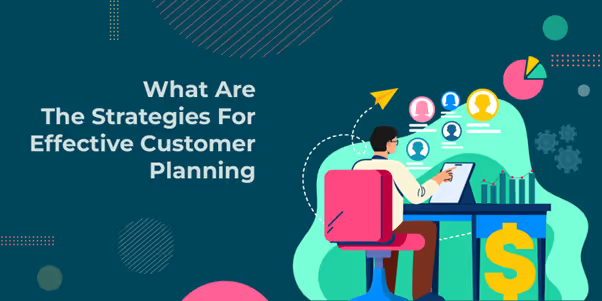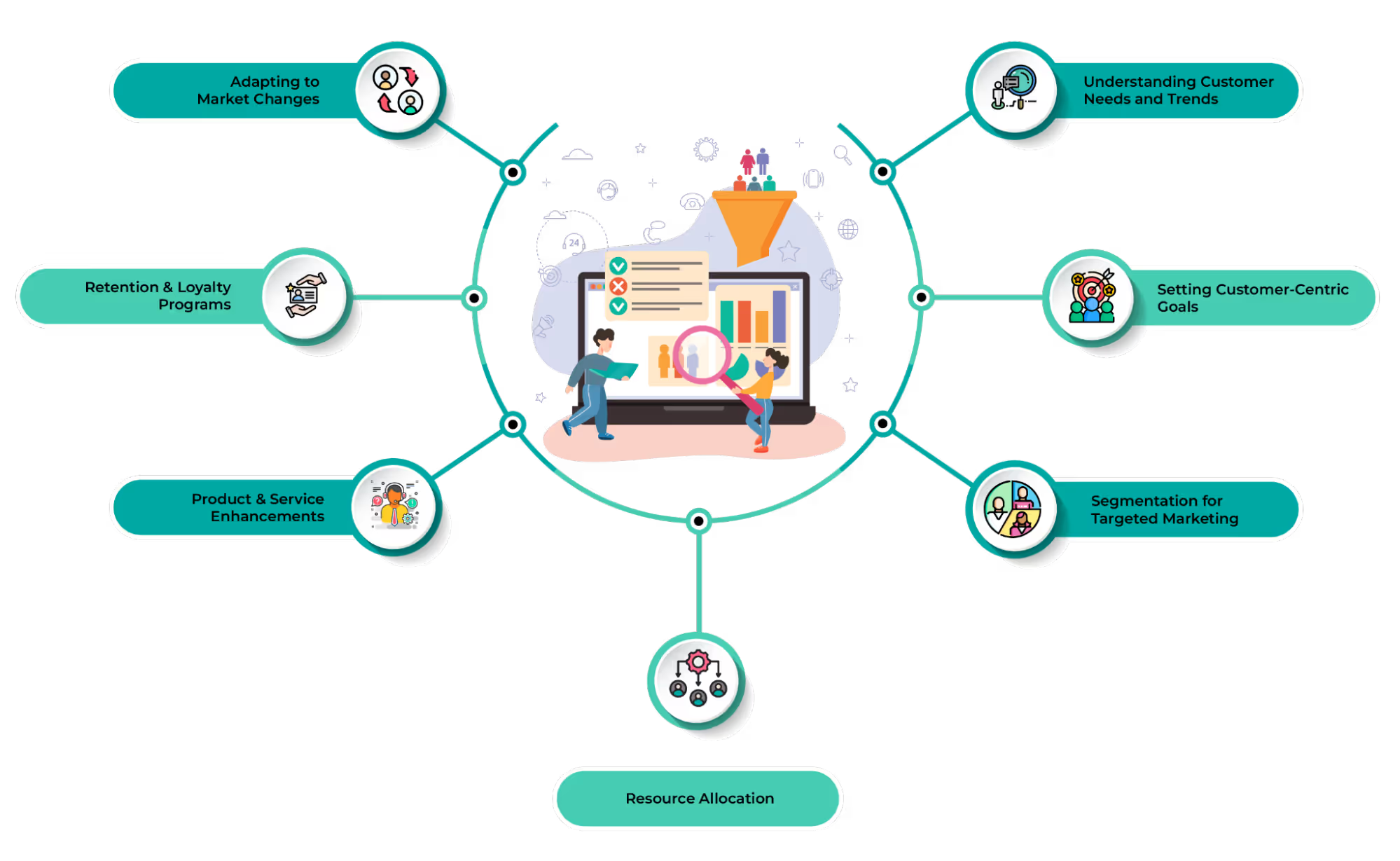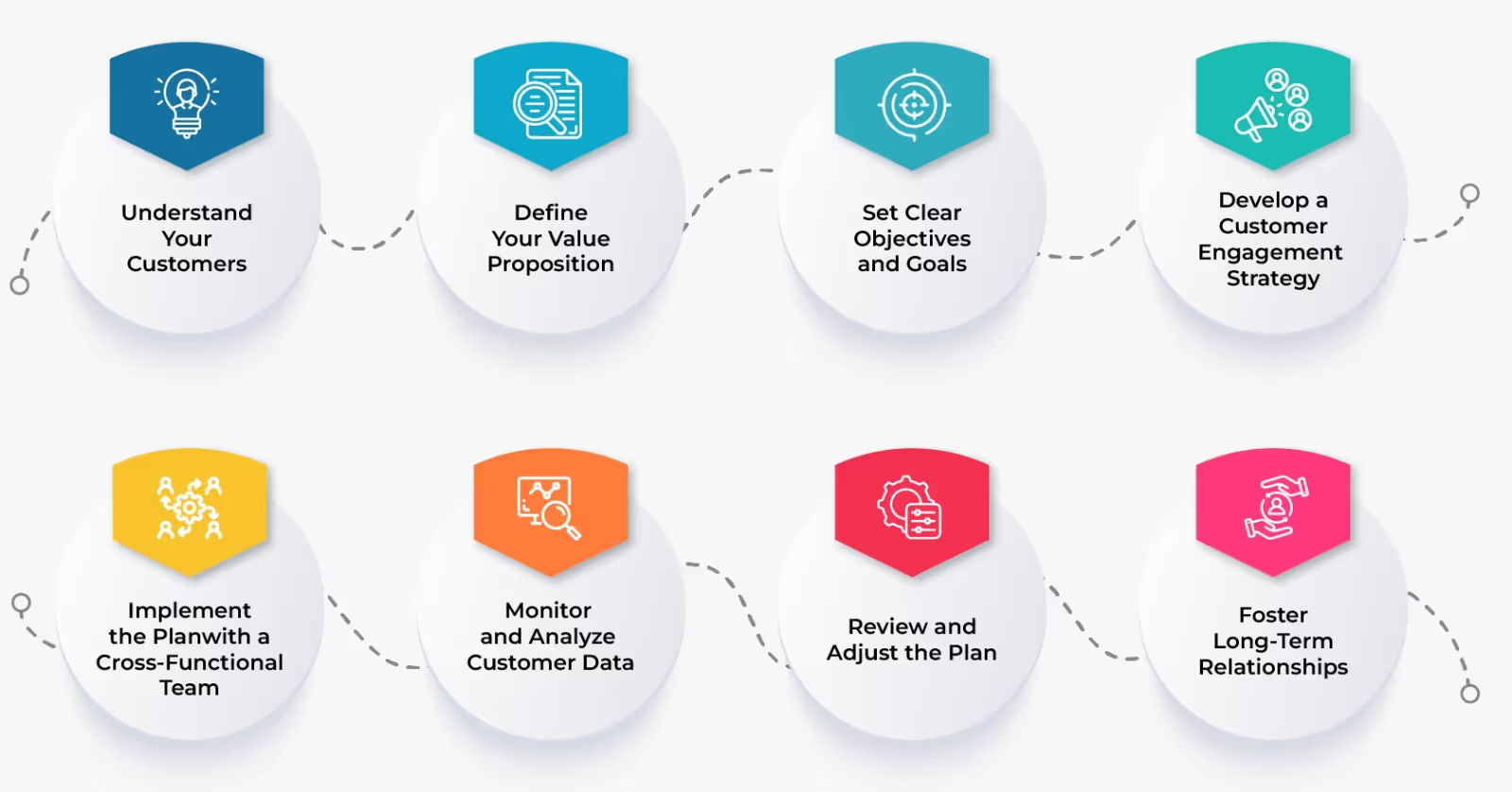
Blog
What are The Strategies for Effective Customer Planning?
February 20, 2024


Key Insights
“It takes months to find a customer…second to lose one.” Vince Lombardi
Most of the time businesses are focused on making new sales, closing deals, and acquiring new customers at the expense of existing customers.
It is a well-known fact in business that the expense of maintaining existing customers is way less than acquiring new ones. But it is a fact that we keep forgetting often as well.
So how does an organization go about keeping their customers satisfied?
In this article we will explore customer planning, how it helps in annual planning, some of the best practices in customer planning, and how customer planning helps in customer retention.
So scroll down for more.
What Is Customer Planning?
Customer planning is the process of creating strategic relations with customers to achieve your business goals. This involved planning and managing strategic interactions to understand, attract, and retain your customer base.
Customer planning framework works towards customer relationship management and customer satisfaction. Hence, it is an ongoing process that is integral to the company’s overall sales and marketing efforts.
Building strong customer relationships fosters loyalty and builds a community base that will ultimately contribute to the success and growth of the business.
How Customer Planning Helps To Create an Annual Plan?
Customer planning plays a crucial role in providing crucial insights for the annual planning of the company’s goals and objectives. Let us explore some of these ways that customer experience planning contributes to annual plan development:

Understanding Customer Needs and Trends
Customer planning requires gathering and analyzing customer data and trends to understand their needs, requirements preferences, and challenges. This gathered information will help businesses forecast future customer demands and work towards planning strategies to meet the growing customer and market demands.
Setting Customer-Centric Goals
The data gathered in understanding customer planning helps in setting customer-centric goals. These initiatives help in attracting new customers, retaining existing customers, and building a satisfied customer community for sustained growth.
Segmentation for Targeted Marketing
Customer planning involves segmenting your customer profile based on specific needs and preferences. While annual planning, customer segmentation helps the sales and marketing team to build focused strategies that enhance the effectiveness of the promotional efforts and bring in more sales.
Resource Allocation
Understanding customer needs and preferences helps in effective resource allocation and strategic planning. This will help identify customer segments that are sure to give a higher return on investment and will help strategically allocate resources, budget, and manpower for better growth potential.
Product and Service Enhancements
Customer planning collects feedback and insights from customers will help in understanding the general opinion on the product, its features, and usability. The annual planning can thus incorporate these insights to upgrade the product and enhance its offerings for better customer satisfaction.

Retention and Loyalty Programs
Customer planning involves building strategies to retain existing customers and enhance their loyalty. Annual planning can thus initiate some customer retention and engagement programs to ensure customer retention and encourage repeat purchases.
Adapting to Market Changes
Market trends and customer preferences are fast changing in the current dynamic world. Hence, annual planning must formulate ways where the operations stay agile and flexible to the fast-changing trends and requirements.
Customer engagement planning can provide crucial data and insights that can be incorporated while planning the annual business operations.
Best Practices For Creating Effective Customer Planning?
With great impact on the overall business operations and planning, customer experience planning must incorporate some best practices that will help optimize the overall company performance, including effective sales territory planning to ensure targeted and efficient sales efforts.
So here are a few best practices that you can incorporate in customer planning:

Understand Your Customer Base
To create effective strategic planning for customer success, it is crucial to conduct market research to understand your ideal customer profile, their needs, preferences, and challenges. This helps in making segmented and targeted efforts to strategize and close deals, ultimately contributing to the overall sales revenue planning of the organization.
Set Clear Objectives
Set clear objectives as to what your customer journey and goals are. This helps in planning out strategies for acquiring new customers, retaining existing customers, and improving the overall customer experience. Aligning these goals with the overall company objective will help streamline growth.
Establish Key Performance Indicators
The effectiveness of any process and strategy can only be determined by setting performance metrics. It helps evaluate your progress based on certain milestones, thereby ensuring steady growth and improvement. These KPIs include customer acquisition cost, retention rates, customer satisfaction score, etc.
Utilize Customer Feedback
For effective customer planning seeking feedback from the customers themselves is important. Companies can be in constant conversation with their customers through surveys, reviews, and direct interactions. These conversations provide insights that help in future improvement in customer satisfaction.
Invest in Customer Relationship Management Systems
The efficiency of any process cannot be attained without automation tools. Implementing Customer Relationship Management systems will help streamline customer interactions, providing customer data on various factors affecting purchases and supporting the development of a comprehensive sales planning roadmap.
Regularly Review and Update Strategies
Customer planning is an ongoing process and a dynamic process that is influential in changing market trends and customer behavior. Hence, it's important to keep a regular review of your customer planning strategies to ensure they meet the customer satisfaction requirements.
Incorporating these practices into your customer planning process will help in building strategies that are customer-focused and effective in bringing the desired results.
How Customer Planning Helps In Customer Retention?
The cost of maintaining an existing customer is way less than acquiring new ones. Hence, effective customer planning plays a crucial role in providing excellent customer experience, ensuring customer satisfaction, and retaining your customer base.
Practices like customer segmentation and customer data analysis help in building targeted strategies that will meet customer requirements and address their pain points. With fast-changing market trends and customer preferences, this calls for businesses to stay on their foot, being agile and flexible to these dynamic trends.
Understanding these changing trends, adapting to the growing demands, and personalizing your customer strategies will help retain your customer base and build loyalty to the brand.
In addition to these proactive measures, it is also important to review and revamp your customer planning regularly to cross-check its effectiveness in fulfilling expected outcomes.
What is customer engagement planning?
Customer engagement planning is about creating a personalized experience for each customer, based on their individual needs and behaviors. By following these steps, you can create a customer engagement plan that's more relevant, engaging, and effective.
📍Go beyond demographics. What are their pain points, their goals, and their interests?
📍Divide your customers into groups based on shared characteristics. This helps you tailor your messaging.
📍Map out the customer's journey from initial contact to becoming a loyal customer. This helps you identify touchpoints where you can engage them.
📍Leverage customer data to understand their preferences and behaviors. This helps you personalize your communications.
📍Track your engagement efforts to see what's working and what's not. This helps you refine your strategy.
Strategic Planning Models and Tools
Let’s take a closer look at some of the go-to strategies you can rely on. With these tips, you’ll get a better grip on how to create plans that stick and actually work, not just for the short term but for the long haul too.

1. Understand Your Customers:
- Who are they? Age, gender, location, interests, etc.
- What do they need? What problems do they face?
- Why do they choose you? What sets you apart from competitors?
2. Define Your Value Proposition:
- What makes you unique? What value do you offer your customers?
- How do you differentiate yourself? What sets you apart from competitors?
3. Set Clear Objectives and Goals:
- What do you want to achieve? Increased customer satisfaction, higher sales, or something else?
- How will you measure success? Define key performance indicators (KPIs).
4. Develop a Customer Engagement Strategy:
- How will you reach your customers? Email, social media, events, etc.
- What will you say? Create compelling content that resonates with your customers.
- How will you personalize the experience? Tailor your messaging to individual needs.
5. Implement the Plan with a Cross-Functional Team:
- Involve everyone: Marketing, sales, customer service, etc.
- Assign roles and responsibilities: Make sure everyone knows their part.
6. Monitor and Analyze Customer Data:
- Track key metrics: Customer satisfaction, engagement rates, sales.
- Use data to make informed decisions.
7. Review and Adjust the Plan:
- Is it working? Are you meeting your goals?
- Make necessary changes. Adapt your strategy as needed.
8. Foster Long-Term Relationships:
- Build trust: Be transparent and reliable.
- Provide exceptional service: Go above and beyond to meet customer needs.
Strategic Planning Tools
These are tried-and-true tools that have been helping businesses succeed for decades. They’ve stood the test of time, and with good reason, they work!

SWOT:
Assess your internal strengths and weaknesses, and external opportunities and threats.
Porter's Five Forces:
Analyze the competitive landscape and your bargaining
Visioning:
Define your long-term goals and direction.
PESTLE:
Consider political, economic, sociocultural, technological, legal, and environmental factors.
VRIO:
Evaluate your resources and capabilities for competitive advantage.Conclusion
Customer planning fosters a customer-centric approach that focuses on enhancing your customer loyalty, experience, and satisfaction, while also aligning with effective sales planning approaches to maximize revenue and growth.
For more related readings, visit https://www.kennect.io/. For more information, Book A Demo NOW!
ReKennect : Stay ahead of the curve!
Subscribe to our bi-weekly newsletter packed with latest trends and insights on incentives.
Thank you! Your submission has been received!
Oops! Something went wrong while submitting the form.
Your data is in safe hands. Check out our Privacy policy for more info















